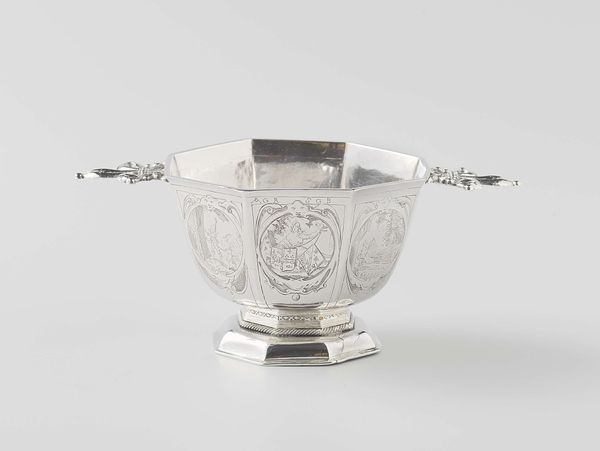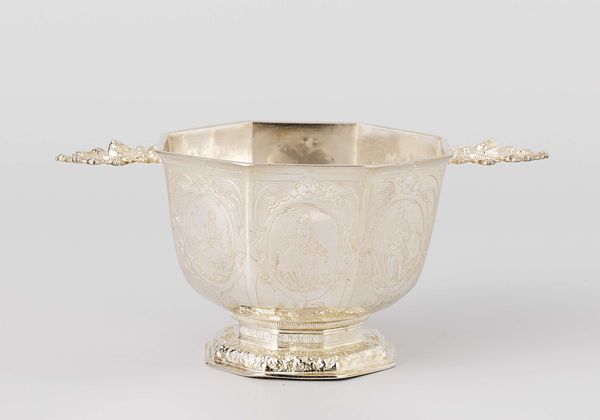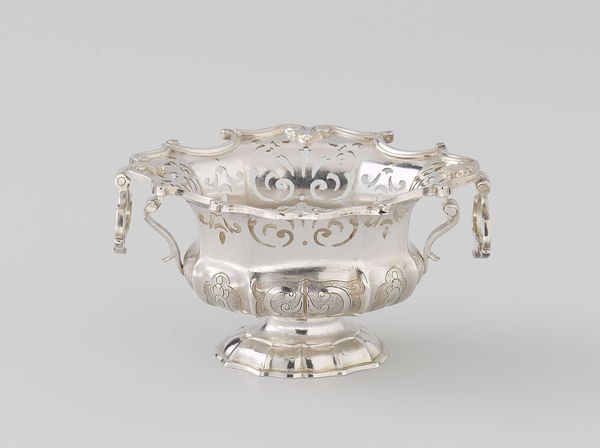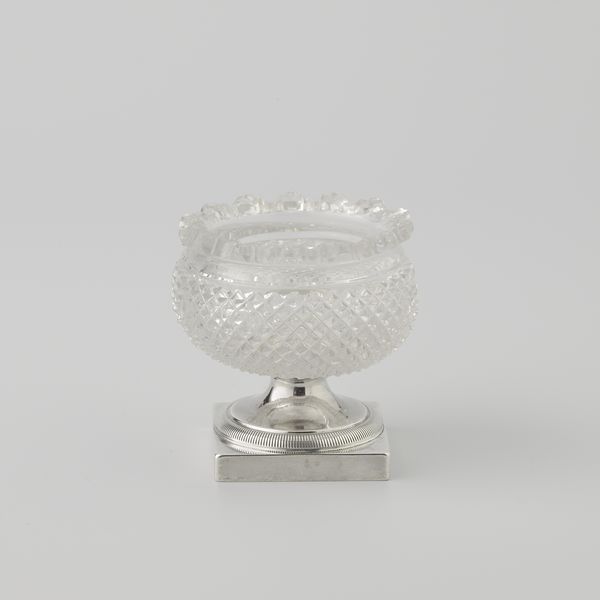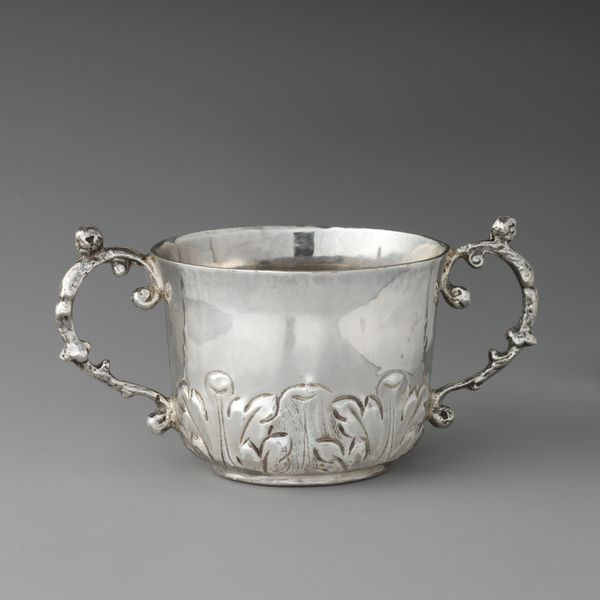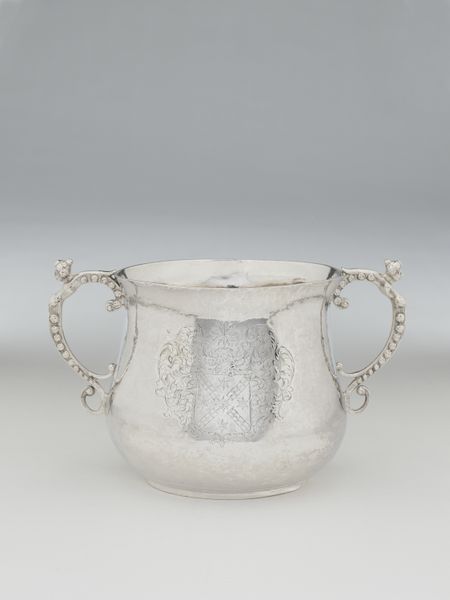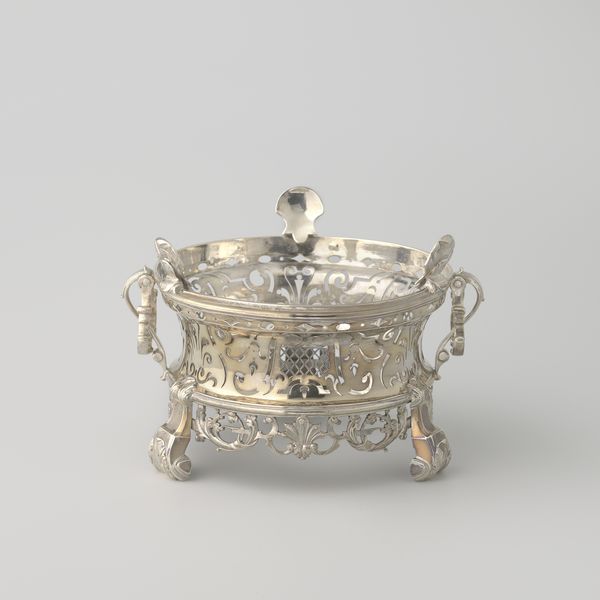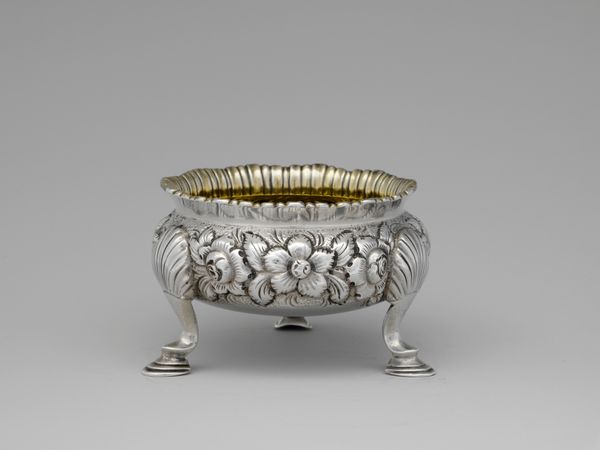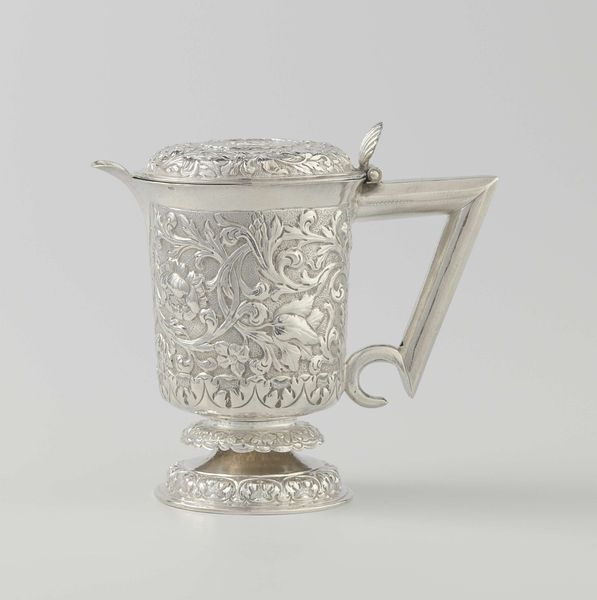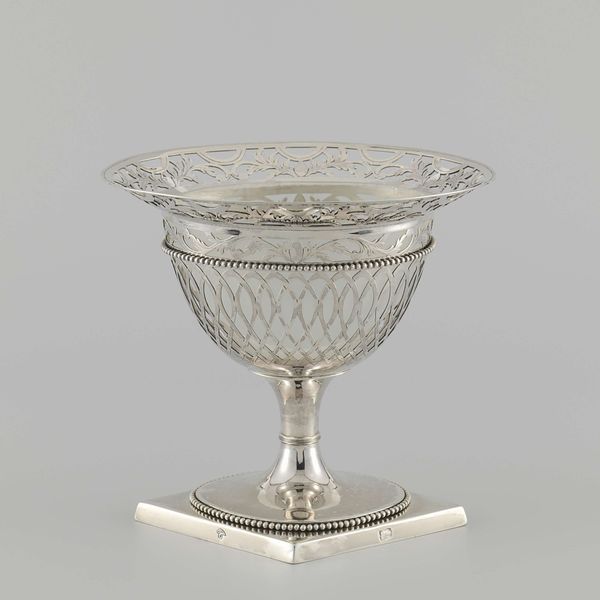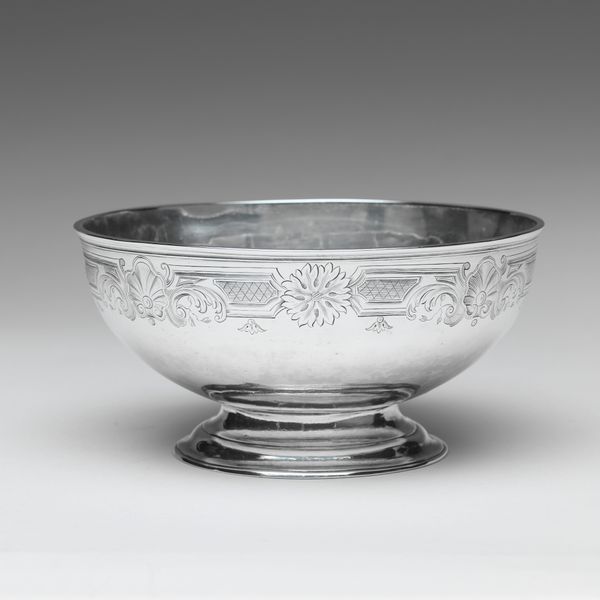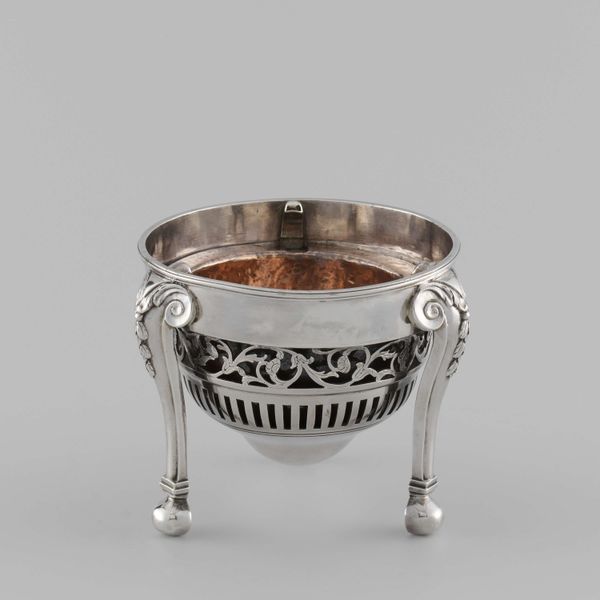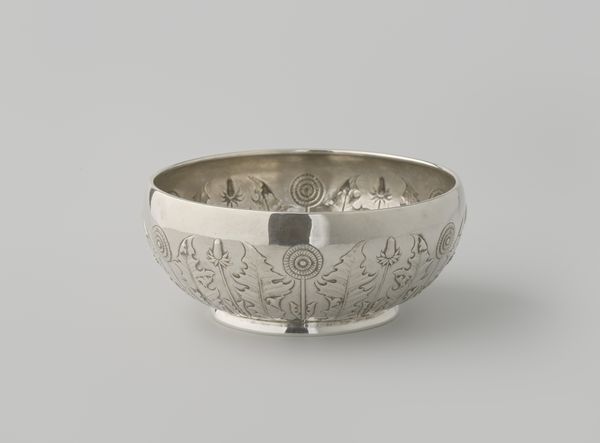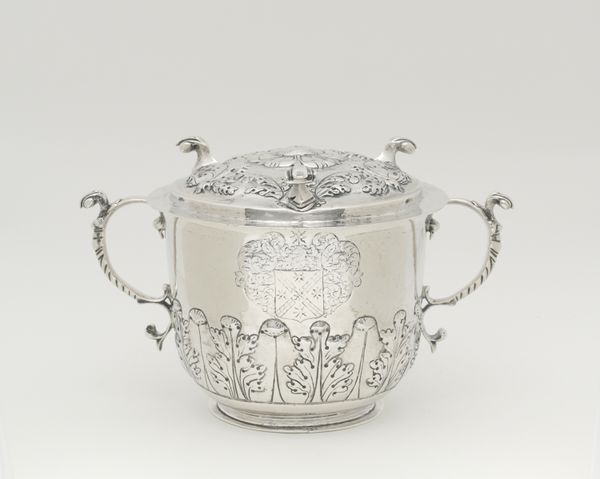
silver, metal
silver
baroque
metal
decorative-art
Dimensions: height 8.1 cm, diameter 11.7 cm, width 19.7 cm
Copyright: Rijks Museum: Open Domain
Curator: This is a brandewijnkom, a brandy bowl, crafted in 1667 by Scholte Janssen II. It’s made of silver, a luxurious object signaling wealth and status. Editor: It gleams! The light just bounces off it. Even now, encased behind glass, it almost feels… alive. The delicate engraving work looks so refined, precise. Curator: The Baroque style is quite prominent, particularly in the decorative flourishes around the bowl's edges and its ornate handles. Those handles – what details! And of course, its intended purpose, for communal drinking, connects it directly to rituals of conviviality and social bonding. Editor: There's a tension here, isn't there? Silver, usually associated with delicate dining, with the sharpness and strength perhaps needed for the more aggressive flavors of a spirit? It’s also undeniably Dutch. Do you think its craftsmanship represents a moment in Dutch cultural pride? Curator: Absolutely. Remember the 17th century was the Dutch Golden Age. It would have symbolized Dutch power and trading might, where commodities flowed freely. This bowl embodies not just a spirit of celebration, but perhaps also a sense of self-assuredness tied to colonial practices of the era. The very substance, silver, bears witness to those dynamics. Editor: How does this vessel invite participation, though? What were the cultural implications when sharing such a commodity-heavy object in the space of commensality? Were lower social strata privy to its table? What did it mean for the disenfranchised to be spectators, or excluded altogether? Curator: Those are pertinent and vital points to ponder. Drinking vessels such as this weren’t merely functional objects, but carefully constructed signs, declaring membership, authority, and privilege. The coats of arms are perhaps evidence of familial heritage or allegiance... I agree— we shouldn't lose sight of those it necessarily excludes in its shimmering expression of bounty. Editor: The way the facets catch light is a compelling effect—a physical display of the intangible effects of imbibing in general? So the brandewijnkom invites not just drink, but questions surrounding labor and material power as well, even across time and context. Curator: An important consideration and precisely why exploring material culture is such a powerful mirror for our shared past and present. The layers revealed here, literally in the metal itself, give pause for rich conversation!
Comments
No comments
Be the first to comment and join the conversation on the ultimate creative platform.
